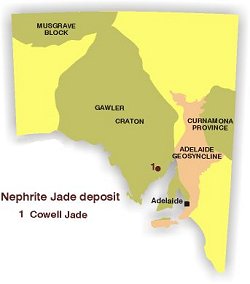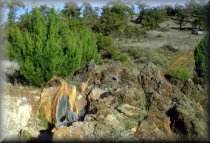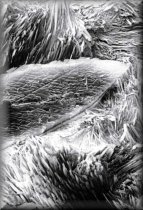 Jade has been used and appreciated by humans for thousands of years. It was fashioned into ornaments, tools and weapons by Neolithic people and has been used for religious tokens by Aztec, Maya and Maori cultures. The Chinese have revered jade above all other gemstones and it has a unique place in Chinese history. Jade artefacts have been found at ancient sites of Neolithic culture in Europe, Asia, and both North and Central America. Some of the oldest sites, such as one in Siberia, extend man’s use of jade back beyond 5000 BC.
Jade has been used and appreciated by humans for thousands of years. It was fashioned into ornaments, tools and weapons by Neolithic people and has been used for religious tokens by Aztec, Maya and Maori cultures. The Chinese have revered jade above all other gemstones and it has a unique place in Chinese history. Jade artefacts have been found at ancient sites of Neolithic culture in Europe, Asia, and both North and Central America. Some of the oldest sites, such as one in Siberia, extend man’s use of jade back beyond 5000 BC.
The term jade is used to describe two distinct minerals — nephrite and jadeite. Both materials are tough, compact and fine grained. They may be similar in appearance, but belong to different mineralogical groups. Nephrite jade belongs to the amphibole group, and jadeite belongs to the pyroxene group.
Nephrite, the traditional Chinese jade, is a monoclinic amphibole that ranges between the end members tremolite (Ca2Mg5Si8O22(OH)2) and ferroactinolite (Ca2Fe5Si8O22(OH)2). Nephrite can be white, yellow, green and brown to black, depending on the amount of iron substituting for magnesium. Iron-poor tremolite is white, grey or green; whereas iron-rich varieties (actinolite) are darker green, grey-green, and grading though to black. Cowell jade has an iron content of up to 7.9% Fe2O3.
The most important property of nephrite jade is its toughness, which explains its widespread use for axe heads, knife blades, and delicate, durable carvings. Toughness in this context is the opposite of brittleness, and is a quite different property to hardness, which is simply the resistance of a material to scratching. Diamond is the hardest mineral, whereas nephrite is the toughest, rivalling modern artificial zirconium ceramics. The toughness of nephrite is due to its interlocking meshwork of fine fibres or needle-like crystals which are commonly 0.1–5.0 µm (microns) in diameter and 20–150 µm long. These fibres usually are arranged in bundles, with the toughest nephrite having bundles of very fine fibres arranged in random interlocking orientation. Coarse grain size and the presence of foliation (alignment of fibres or fibre bundles) reduces the toughness of nephrite.
 Jagged outcrop of Cowell jade |  Interlocking fibres of Cowell nephrite jade |  Black Cowell jade |
Jade in South Australia
Jade deposits near Cowell on Eyre Peninsula are among the largest known nephrite jade deposits in the world. They were discovered in 1965 when Harry Schiller, a local farmer prospecting in the area, collected a 3–4 kg boulder of dense, hard rock near an outcrop of white, dolomitic marble. The boulder was subsequently identified as nephrite by Adelaide University and South Australian Museum.
Ninety-one separate jade outcrops were identified by Department of Mines geologists in 1974, and well over one hundred are now known. All are located within an area of ~10 km2, referred to as the Cowell Jade Province. The bulk of resources occur on the 23 leases held by Gemstone Corporation of Australia Ltd.
The jade bodies at Cowell typically have elongate, lensoid shapes in outcrop. Host rocks are dolomitic marble and banded calc-silicate of the Palaeo- to Mesoproterozoic Minbrie Gneiss. These high-grade metamorphic rocks were produced during the first and second deformational events of the Kimban Orogeny, ~1840 and 1780 million years ago, respectively. Subsequent retrogression occurred ~1700 Ma with later cross-warping and alteration at ~1600–1590 Ma. Nephrite only formed within the alteration and retrogression assemblages.
Alteration zones, consisting of tremolite, chlorite, epidote, clinozoisite–zoisite and talc, occur particularly along the margins of, or in close proximity to, chloritised feldspar rock that has intruded dolomitic marble. Cowell nephrite formed:
- Within alteration zones as large lenses up to 40 m long by 3 m wide, conformable with lithological layering.
- Within cross-fractures up to 1 m wide parallel to the axial plane of late-stage cross-warping. Nephrite in cross-fractures is typically high quality, fine grained, massive, and dark green to black, but does occur in rarer translucent light green colours.
- By irregular alteration of coarse-grained, brecciated diopside, producing schistose nephrite that often has diopside inclusions.
- The geological setting at Cowell of Mesoproterozoic dolomitic marble host rocks contrasts with other major occurrences of nephrite in New Zealand, Canada and Taiwan, where nephrite lenses occur within or along the faulted margins of serpentinised ultramafic rocks such as peridotites.
Cowell jade exhibits a variety of colours and textures, but consists predominantly of medium to fine-grained material showing greenish yellow to green hues, grading to black. Three main varieties are marketed — green nephrite, black nephrite and premium black nephrite. Cowell black jade takes a very high polish by simple lapidary techniques. Very fine-grained premium black takes a mirror-like polish. There are also rare varieties which exhibit spectacular patterns, including varieties with dendritic inclusions, and wavy banding on the rind of near-surface boulders.
Total recorded production to date from the Cowell Jade Province of Jade from 1982 to 2013 is ~479 tonne.
Additional Reading
Barnes, L.C. et al., 1980. Nephrite jade. In: Some semiprecious and ornamental stones of South Australia. South Australia. Department of Mines and Energy. Handbook, 4:11-39.
Farrand, M.G., 1985. Genesis of jade and host rocks in DDH14 at outcrop 15, Cowell jade province, South Australia. South Australia. Department of Mines and Energy. Report Book, 85/20.
South Australian Department of Mines and Energy, 1991. Jade in South Australia. South Australia. Department of Mines and Energy. Information Sheet, 13.
Flint, D.J. and Dubowski, E.A., 1991. Cowell Jade Province: detailed geological mapping and diamond drilling of jade and ornamental marble outcrops 1982–1987. South Australia. Department of Mines and Energy. Report Book, 89/51.


